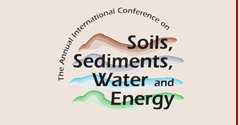Abstract
The idea of reconciling landscapes through remediation is not new to the discipline of landscape architecture. However the potential of using transformative remediation to build urban form as a large-scale landscape network and that makes the process of remediation part of an urban landscape experience is still underdeveloped in theory and practice. This paper examines how a remediation process could be exhibited and become a staged design element, and how landscapes of cleaning can become part of the urban infrastructure to create new neighborhoods for research, education, working, and living. The example of two adjacent sites on the contaminated Elbe – Island in Hamburg, Wilhelmsburg Germany demonstrates how the purification process of water and soils can be showcased and experienced by the public and how the landscape framework becomes part of the urban infrastructure. The paper proposes a structural landscape framework for how remediation could become an artistic, aesthetically pleasing intervention with environmental value.
Recommended Citation
Sleegers, Frank
(2010)
"Phytoremediation as Green Infrastructure and a Landscape of Experiences,"
Proceedings of the Annual International Conference on Soils, Sediments, Water and Energy: Vol. 15, Article 13.
Available at:
https://scholarworks.umass.edu/soilsproceedings/vol15/iss1/13
